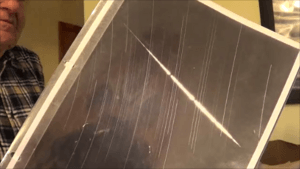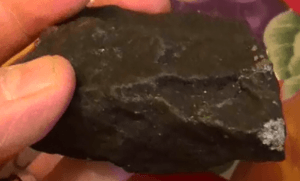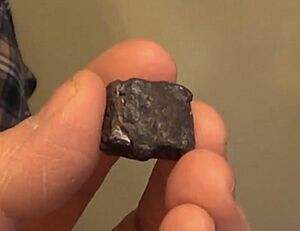Lost City, Oklahoma facts for kids
Lost City is a small community in Cherokee County, Oklahoma, United States. It's a place that the government counts for population numbers, even though it doesn't have its own city government. In 2020, about 767 people lived there. Lost City is famous for being the first place in the U.S. where a meteorite fall was caught on camera by a special network.
The name "Lost City" has an interesting story. Some people say that after the Cherokee people moved to this area, a village of theirs seemed to disappear. Their belongings and even their campfires were still there, but the people were gone.
Where is Lost City?
Lost City is located in the northeastern part of Oklahoma, a region often called "Green Country." This area is known for its lush green plants and many lakes, like Fort Gibson Lake, which is just west of Lost City. You can find Lost City north of Oklahoma State Highway 51 and northwest of the city of Tahlequah.
The exact location of Lost City is 36°00′58″N 95°08′58″W / 36.01611°N 95.14944°W. The total area of the community is about 60.9 square kilometers (or about 23.5 square miles), and it's all land.
Who Lives in Lost City?
According to the census in 2000, there were 809 people living in Lost City. Most households were families, with many having children under 18. The average household had about 2.9 people. The community has a mix of different backgrounds, including White and Native American residents. The median age in Lost City was 35 years old.
The Famous Meteorite Fall of 1970

On January 3, 1970, something amazing happened near Lost City. Four cameras from the Prairie Meteorite Network all took pictures at the same time of a bright fireball streaking across the sky. This fireball was a meteoroid (a space rock) burning up as it entered Earth's atmosphere. It was visible for about nine seconds and even made a loud sonic boom!
Scientists looked at these photos and figured out that a meteorite (a piece of the space rock that landed on Earth) might have fallen in an area east of Lost City. This was a really big deal because it was the first time in the U.S. that a fireball was photographed from so many different places at once. This allowed scientists to calculate exactly where the meteorite might have landed.
Six days later, a field manager for the network, Gunther Schwartz, went to the Lost City school to ask if anyone had seen or heard anything. A maintenance man and bus driver named Isaac Gifford told him he had seen it while out raccoon hunting. Gifford took Schwartz to the spot where he saw the meteorite in the air. They walked to the location and soon found the first meteorite! Schwartz was incredibly excited, saying, "Suddenly there was the black rock in the road, and I wondered what it was doing there, and got out to look at it... Just think of the odds against finding it there. Fantastic."
After the first discovery, three more smaller pieces of the meteorite were found. On January 17, a piece weighing 272 grams (about half a pound) was found by a cattle farmer. On February 2, a larger piece weighing 6.6 kilograms (about 14.5 pounds) was discovered. Finally, on May 4, another piece weighing 640 grams (about 1.4 pounds) was found. All these pieces were found within half a mile of Lost City.
Scientists studied the Lost City meteorite and found it was a type called an H5 chondrite. The amazing photos taken by the Smithsonian Astrophysical Observatory helped scientists figure out where the meteorite came from. They learned that it had traveled all the way from the asteroid belt, a region between Mars and Jupiter where many asteroids orbit the Sun.
See also
 In Spanish: Lost City (Oklahoma) para niños
In Spanish: Lost City (Oklahoma) para niños



